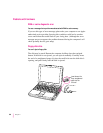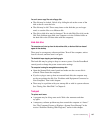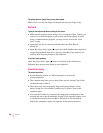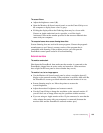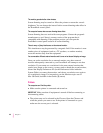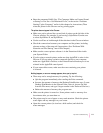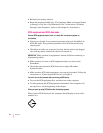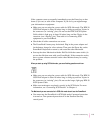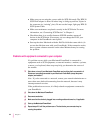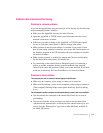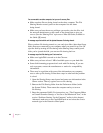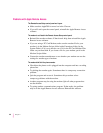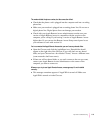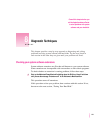
m Make sure you are using the correct cable for SCSI disk mode. The HDI-30
SCSI Disk Adapter is about 10 inches long, is dark gray, and has 30 pins in
the connector (no “missing” pins). Do not use the longer, light gray HDI-30
SCSI System Cable.
m Make sure terminators are placed correctly in the SCSI chain. For more
information, see “Connecting SCSI Devices” in Chapter 4.
m Check that there is no conflict between SCSI ID numbers among all
devices in the SCSI chain. If necessary, you can change the ID for your
computer in the PowerBook control panel.
m Start up the other Macintosh with the Disk Tools disk that came with it (do
not use the disk that came with your PowerBook). If the connection works,
then a system software extension on the other Macintosh may be causing
the problem.
Problems with equipment connected to your computer
If a problem occurs while your Macintosh PowerBook is connected to
equipment such as SCSI equipment, an external monitor, a modem, a printer,
a mouse, or a keyboard, these steps may help you determine the source of
the trouble:
1Shut down or turn off your Macintosh PowerBook and anything that’s connected to it.
Disconnect everything connected to your Macintosh PowerBook (except the power
adapter) and restart it.
Note: If you’re connected to a network, contact your network administrator or
warn other users before disconnecting from the network, because it may
interrupt network services.
If the problem does not recur, it is likely related to equipment connected to
your PowerBook.
2Shut down the Macintosh PowerBook.
3 Reconnect one device.
4Make sure that the device is plugged into a working outlet and turned on, if applicable.
5 Start up the Macintosh PowerBook.
6 Repeat steps 2–5 until the problem recurs. The last device you connected may be
causing the problem.
114
Chapter 7



